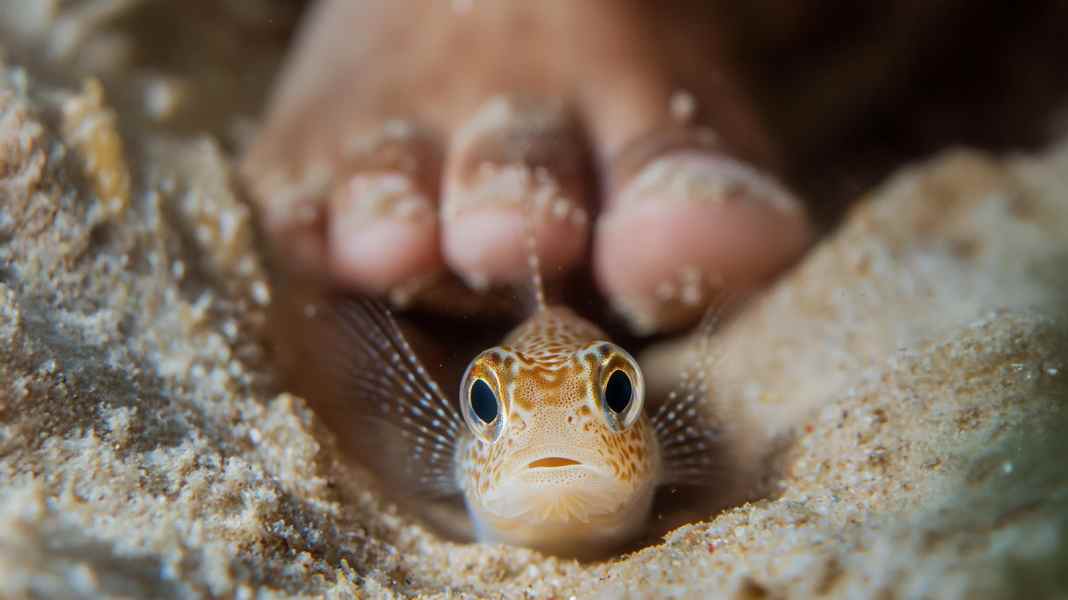North Sea and Baltic Sea: Why the Petermännchen is becoming a danger for water sports enthusiasts

The St. Peter's fish - the name may sound harmless - is one of the most dangerous poisonous animals in Europe and lives on the coasts. The fish from the perch family can grow up to 50 centimetres long and buries itself in the sand or mud so that it is barely visible to swimmers and its poisonous spines on the dorsal fin and gill cover can cause severe pain, swelling and, in the worst case, even cardiac arrest. Every year, between 30 and 40 people are stung by the St. Peter's mantis on German coasts - often in ankle-deep water, where many holidaymakers wade unsuspectingly.
The Petermännchen can also be a danger for water sports enthusiasts. For example, when anchoring in shallow water and the bottom can be reached with your feet. A dinghy trip to the shore can also end painfully.
Distribution and way of life
The common petrale sole is found in the North Sea and the western Baltic Sea, but also in the Mediterranean, the eastern Atlantic, the Black Sea and the Mediterranean. However, it is said to have disappeared from the Wadden Sea, probably as a result of crab fishing, which is part of its diet.
In summer, the animals come to shallow waters to mate, where they lie practically invisible to humans on the seabed. Only their eyes look out of the sand. This behaviour makes them particularly dangerous for bathers walking barefoot through the water. In winter, the Petermännchen retreat to deeper waters.
Toxicity and symptoms
The venom of the St Peter's bug contains the protein dracotoxin and serotonin. It causes extreme pain and leads to a release of histamine with swelling and redness. After a sting, severe radiating pain typically occurs at the sting site, accompanied by redness and swelling. Fluid-filled blisters may form and numbness may occur. In severe cases, general symptoms such as headaches, fever, nausea, breathing problems or cardiac arrhythmia may occur.
It becomes particularly dangerous when those affected are stung in deeper water and can barely stay afloat due to the extreme pain. In the worst case scenario, a sting can lead to an allergic shock or cardiac arrest.
First aid and treatment
After a sting, the sting must be removed immediately. As a first aid measure, the bite site is disinfected and heated to over 50 degrees. This can be done with a hair dryer, an electric anti-mosquito stick or by bathing the affected part of the body in hot water. The heat destroys the poison molecules.
The area should then be cooled with very cold water or ice cubes. In any case, it is advisable to consult a doctor who can examine the wound and treat a possible allergic reaction, according to the Poisons Information Centre North. The doctor will also ask about the last tetanus immunisation. There is no specific therapy or antidote; treatment is based on the symptoms.
Protective measures for bathers
If you want to be on the safe side and avoid a painful encounter, you should wear bathing shoes. These not only protect you from shell cuts, but also from being stung by the male petrel. Divers and snorkellers should keep their distance from the seabed so that any burrowing panner eels do not feel threatened.
Anglers must be particularly careful when taking fish from a fishing rod or net. They should always wear gloves for protection. The Petermännchen has a dreaded reputation among anglers - as early as the 18th century, an English fisherman is said to have amputated his finger just to get rid of the unbearable pain after a sting.
